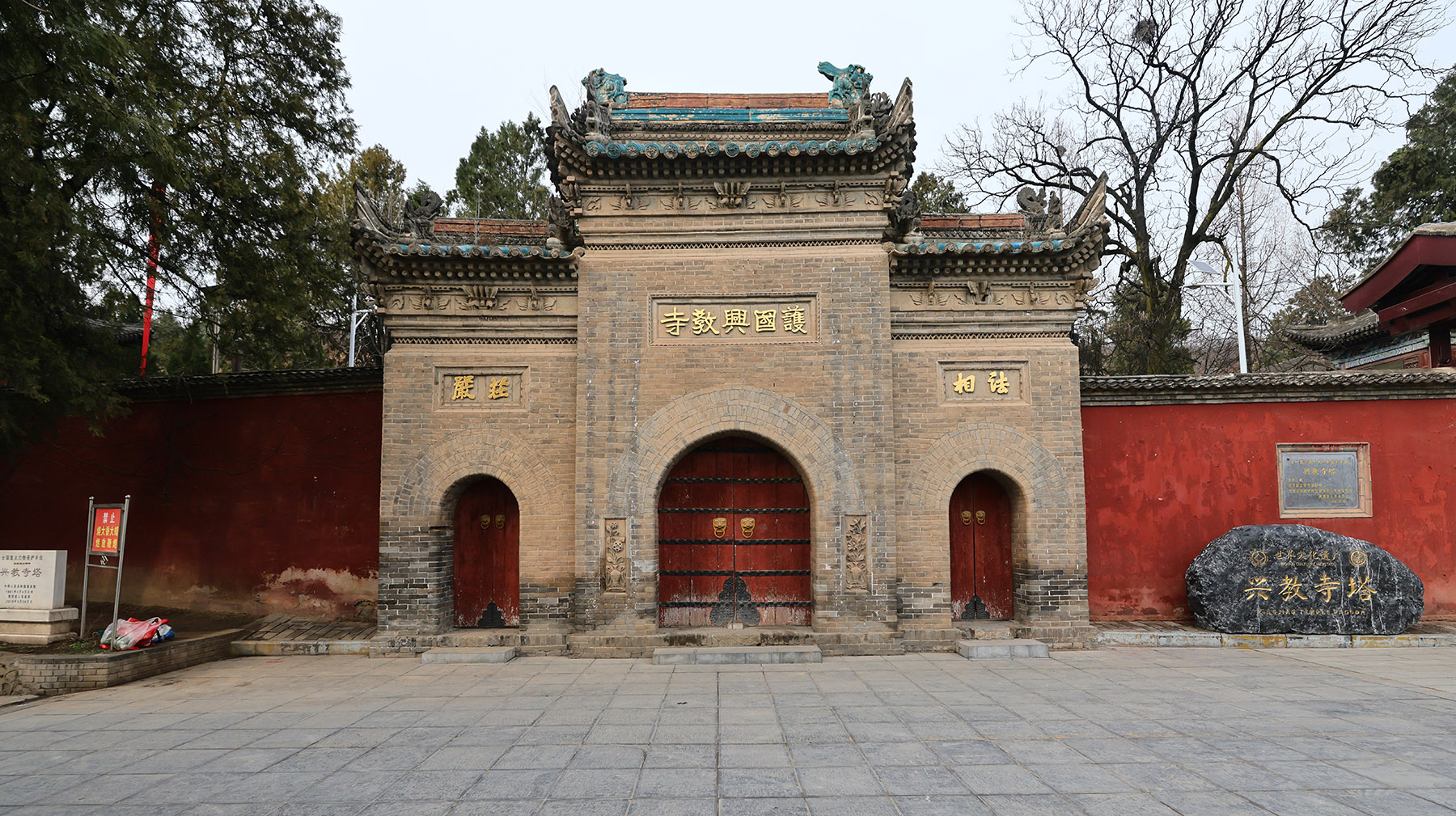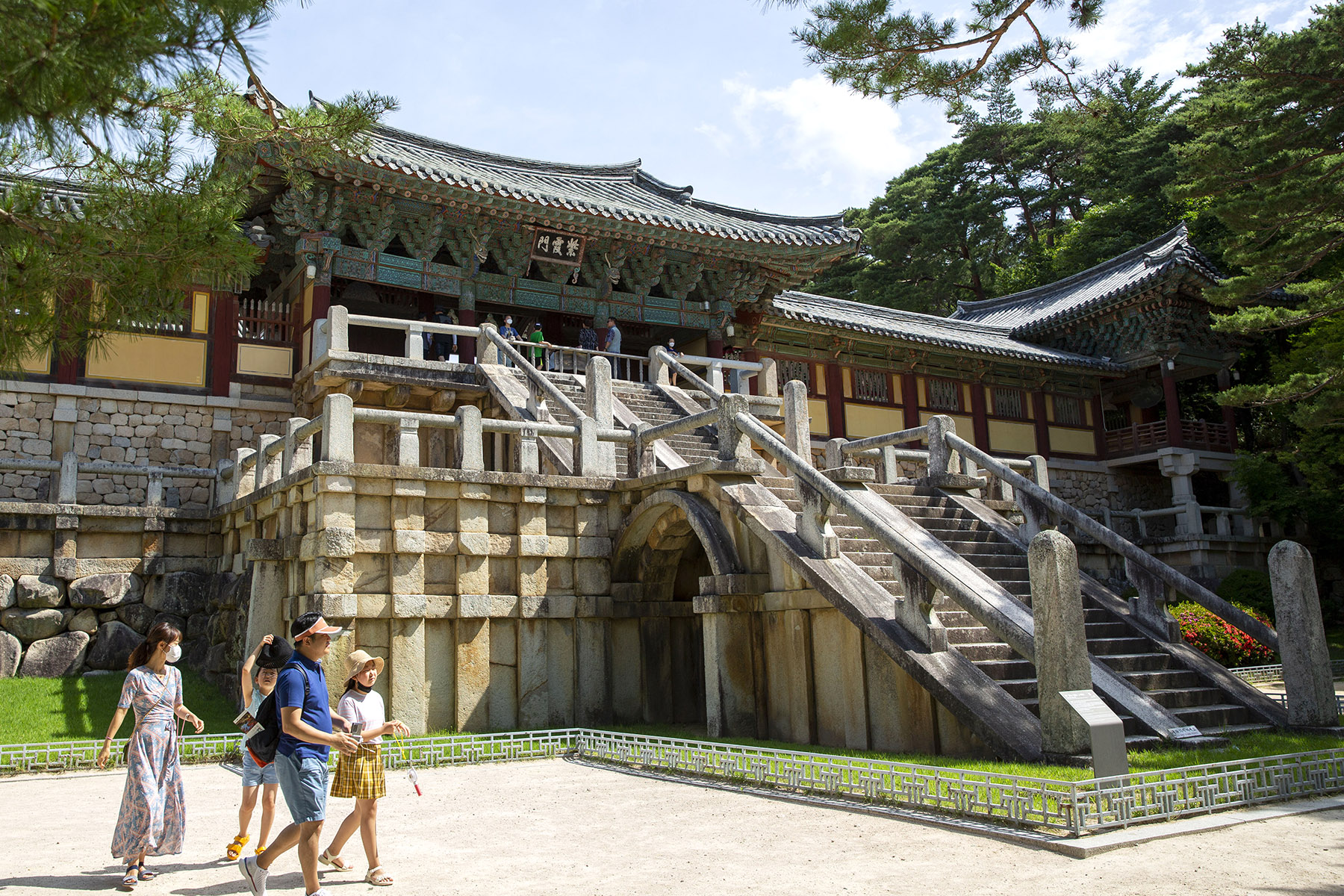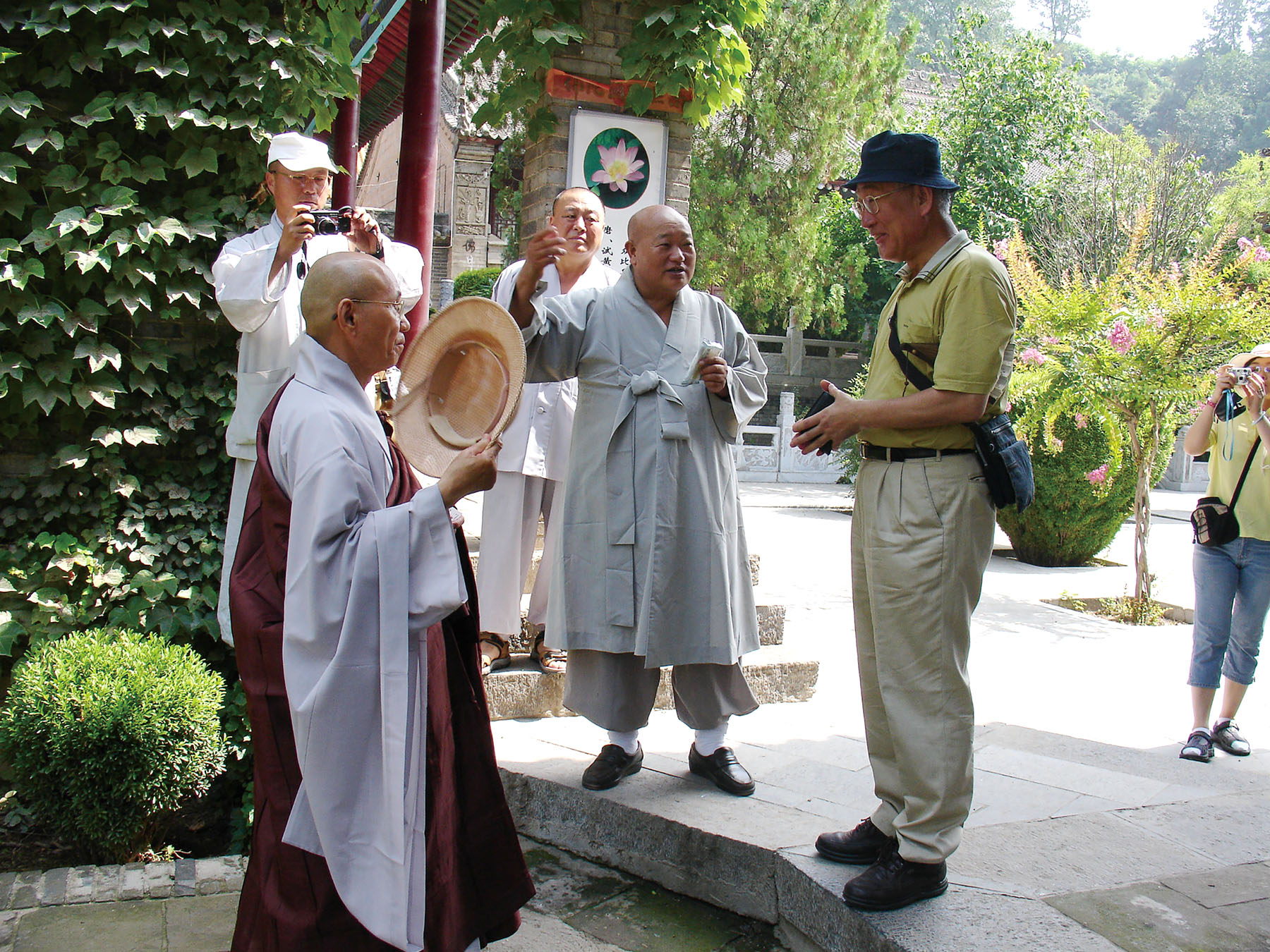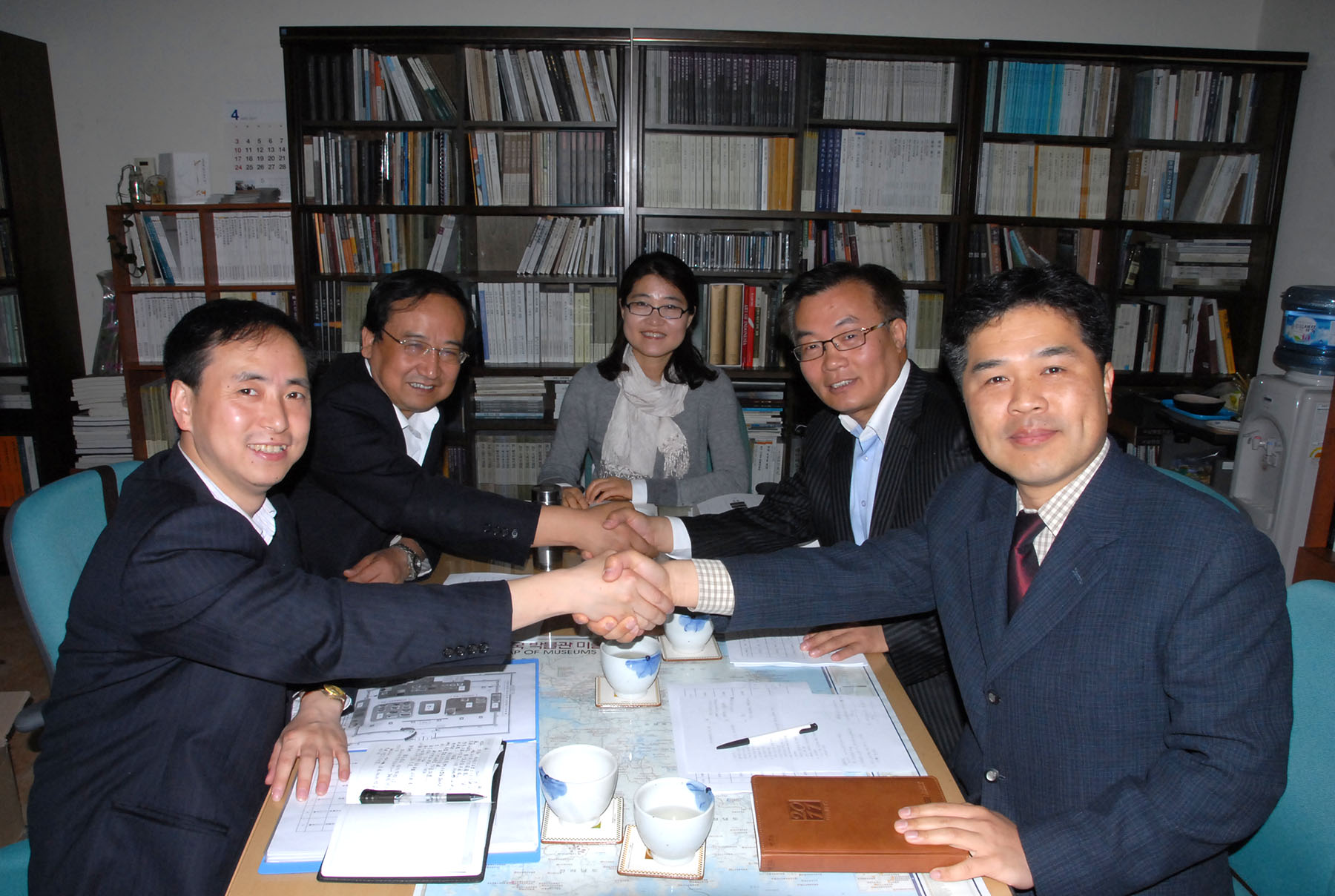Xi'an and Gyeongju share extensive historical and cultural ties

When Hwangbo Ye-jin, 23, a South Korean student, first walked through the streets of Xi'an, Shaanxi province, in January, she was immediately captivated by the city's blend of history and modernity.
"I was struck by how well Xi'an preserves its traditional architecture and culture. The locals take great pride in their heritage and actively pass it on. I found it remarkable and deeply attractive."
This initial spark of fascination led her to apply to enroll in an international exchange program at Northwestern Polytechnical University in Xi'an. She was accepted and arrived in the ancient Chinese capital in August to begin her studies.
Without knowing it, Hwangbo was retracing a route established more than a millennium earlier. Bai Genxing, a professor of the School of History and Civilization at Shaanxi Normal University, said that as early as the seventh century, the Tang Dynasty (618-907) and the ancient Silla Kingdom enjoyed close ties.
READ MORE: China stars in South Korean variety shows
During this period, a steady stream of envoys, students, monks and merchants traveled between the two places, particularly between their respective capitals: Seorabeol (modern-day Gyeongju) in the Silla Kingdom and Chang'an (modern-day Xi'an) in the Tang Dynasty, Bai said.
Among them, the journey of the monk named Yuance, known as Woncheuk in Korean, created a cultural bridge between Xi'an and Gyeongju that endures to this day.
Yuance, from the capital of the Silla Kingdom, entered monastic life at a very young age, Bai said. When he was 15, he traveled to Chang'an, where he dedicated himself to Buddhist studies for decades, ultimately becoming a renowned monk.
"Yuance was one of the earliest and most influential monks from Silla to study in Chang'an, stayed the longest, authored numerous texts, and participated in official scripture translation projects. He helped build an early bridge for Buddhist exchanges between Tang and Silla, paving the way for many more who followed," Bai said.
This ancient connection is not just confined to history books. Xingjiao Temple in Xi'an, which houses Yuance's relics, has maintained ties with Bulguksa Temple in Gyeongju, with continuing personnel exchanges between the two sides.
Xi'an and Gyeongju, building on their profound historical connection, formalized their relationship as sister cities in 1994, two years after China and South Korea established diplomatic ties.
Zhang Rui, vice-president of Xi'an Municipal People's Association for Friendship with Foreign Countries, described the sister-city relationship as a natural culmination of centuries of exchange.
"It's a dialogue between civilizations spanning thousands of years, a moment where historical legacy and contemporary opportunity perfectly meet," Zhang said.
"Gyeongju, known as 'the museum without a roof', is the cradle of Silla civilization, and Xi'an, a millennia-old ancient capital of China, is commonly seen as the starting point of the Silk Road. These two vibrant civilizations intertwined through the Silk Road thousands of years ago. This shared historical and cultural heritage forms the bedrock of our friendship."

Heritage of time
Indeed, evidence of this shared past is woven into the fabric of both cities. Xingjiao Temple, a UNESCO World Heritage site, stands as a lasting testament to Yuance's legacy in the city. Throughout Gyeongju, one can still find remnants and influences of Tang culture at numerous historical sites. According to a UNESCO webpage introducing Gyeongju, Chang'an, which was designed during the Sui Dynasty (581-618) and prospered in the Tang Dynasty, provided a model for the Silla Kingdom.
With this background, Shaanxi History Museum and Gyeongju National Museum forged a sister-museum partnership. Liu Peng, an official at Shaanxi History Museum, said that when his museum leadership first met its counterparts from Gyeongju, they felt an immediate kinship.
"Both sides found our museums strikingly similar. Gyeongju is an ancient capital of the Silla Kingdom, and our city, Xi'an, is also a historic ancient capital. Both museums are leading institutions in their nations, and both sides are interested in collaboration and exchanges related to cultural relic protection and research," Liu said.
"With a shared, strong desire to become sister museums, we signed a Sister Institution Exchange Agreement in 2002. Since then we have maintained regular exchanges and cooperation in artifact conservation, exhibitions and academic research."
This partnership reached a significant milestone in 2012, when the museums commemorated their 10th anniversary of the exchange agreement with reciprocal exhibitions, showcasing Silla Kingdom artifacts from South Korea to audiences in Xi'an, and presenting Shaanxi relics in Gyeongju.
"In selecting the exhibits, we mainly chose artifacts from the same historical period in both countries, with the goal of demonstrating the long-standing cultural exchanges between the two sides," Liu said. "The exhibition in Gyeongju was a sensation, attracting more than 160,000 visitors in just two months."

In more than 20 years of collaboration, staff members from both museums have exchanged regular visits and shared expertise in museum management, academic research and conservation science, he said.
"We are now in the process of renewing our exchange agreement with Gyeongju. I hope the collaboration between the two museums, and even the cities of Xi'an and Gyeongju, will deepen beyond our existing exchanges. China and South Korea have extensive historical and cultural ties. Increased exchanges lead to greater understanding and reduce the chance of misunderstandings," said Liu, who is also secretary-general of the Shaanxi Cultural Heritage Promotion Association.
Last year, marking the 30th anniversary of their sister-city pact, the mayor of Gyeongju, Joo Nakyoung, led a delegation to Xi'an. The visit yielded a new memorandum of understanding on archaeological research and cultural heritage preservation between the Xi'an Institute of Cultural Relics Protection and Archaeology and the Silla Cultural Heritage Research Institute in Gyeongju.
The partnership is a natural fit, said Zhao Fengyan, vice-director of the Xi'an Institute of Cultural Relics Protection and Archaeology.
"Our institutions have a common focus on archaeology and cultural preservation, which creates natural synergy in our academic work. Historically, our regions were closely connected. For example, artifacts about the Silla Kingdom have been discovered here in Xi'an in recent years. These finds provide a strong basis for joint research projects."

Modern connections
Over the past three decades, collaboration between Xi'an and Gyeongju has expanded beyond historical artifacts research to encompass trade, education and professional training.
Zhang of the Xi'an Municipal People's Association for Friendship with Foreign Countries said the two cities have pioneered exchanges between government employees, with Xi'an officials traveling to Gyeongju for administrative training programs, and Gyeongju staff members taking part in Chinese-language courses held by Xi'an.
On the economic front, Xi'an plans to explore collaboration opportunities in emerging fields such as digital cultural tourism, green energy and tech-enabled wellness, Zhang said.
"Our aim is to merge Xi'an's technological prowess with Gyeongju's unique strengths, elevating our sister-city ties into a powerful driver of new productive forces for both regions."
Cho Hong-lai, vice-president of the Korea-China Business Association Northwest Regional Branch, talked of the natural affinity between the two cities.
"Xi'an and Gyeongju are both proud of their cultural history. They are interested in and curious about other people who share similar qualities, and they foster friendships easily. Because of this, people from Gyeongju and broader North Gyeongsang Province are interested in Xi'an, and many of its residents will come to Xi'an to study or do business," Cho said.
"Gyeongju's cultural tourism industry is well-developed, and Xi'an has many cultural tourism industries and historical sites. Connecting these two points to create a cultural tourism project would be a promising avenue."

Kang Ho-gu, director of the Sino-Korean Economy/Society Institute, said: "Long ago, the Silla Kingdom and the Tang Dynasty enjoyed friendly relations, which contributed to regional stability. In modern times, South Korea and China are using their complementary assets to build an East Asian production network together, paving the way for shared prosperity.
"We must not forget the example of amicable partnership that our predecessors set, which forms the foundation of the friendly relations between South Korea and China," he said.
ALSO READ: Beijing-Seoul joint efforts contribute to APEC's success
With Gyeongju hosting the 2025 APEC Economic Leaders' Meeting, Kang expressed hope for this gathering to help further advance bilateral collaboration.
"The meeting in Gyeongju this year, themed 'Building a sustainable tomorrow: Connect, innovate, prosper', aligns closely with China's four global initiatives and the concept of a community with a shared future for humanity," he said.
"I look forward to seeing all those attending the meeting using it as a platform to engage in bilateral and multilateral talks, enhance communication, dispel misunderstandings and promote collaboration."
Contact the writers at yangran1@chinadaily.com.cn



